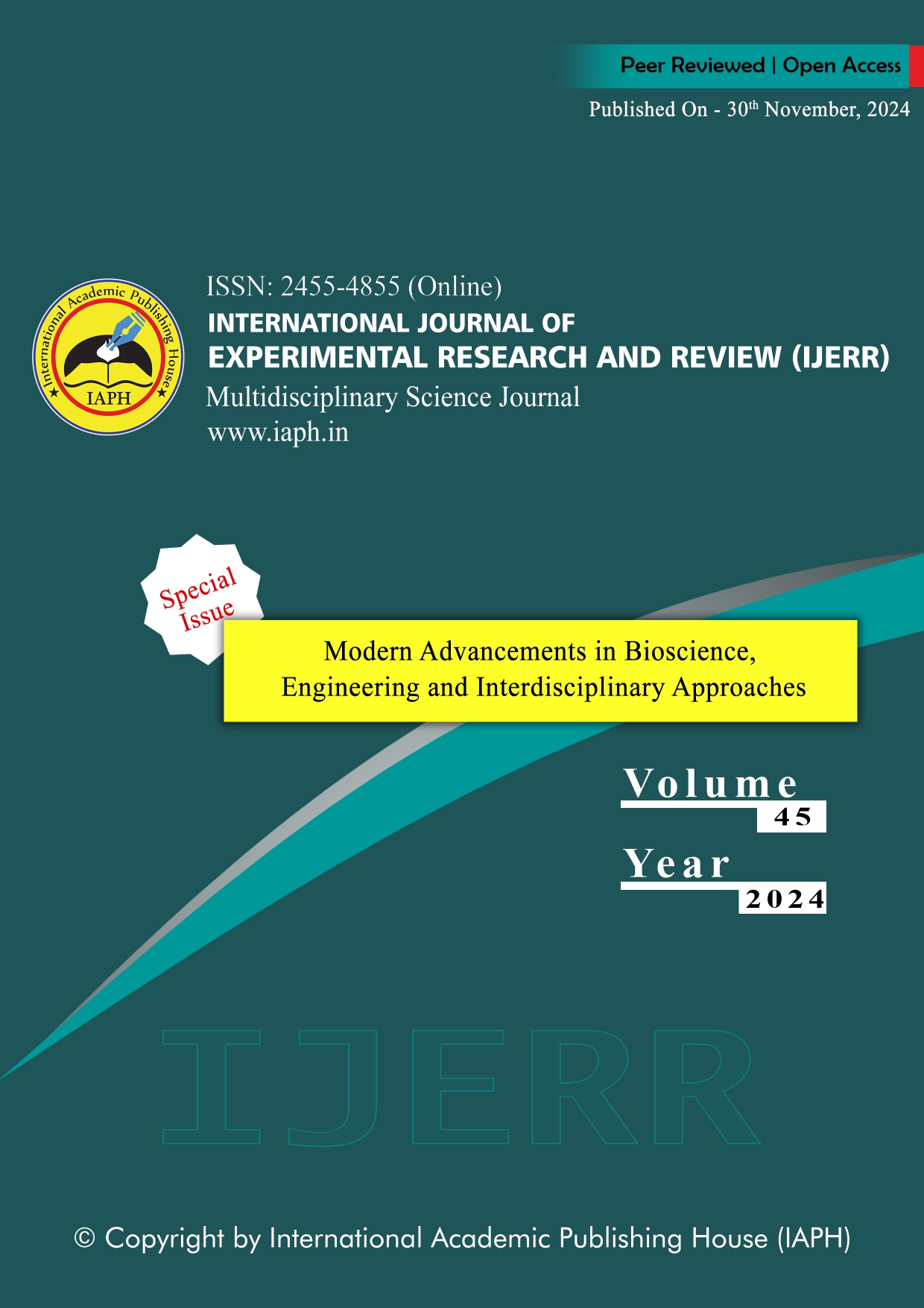Experimental Analysis of Dynamic Vibrations in Rails by Using Different Types of Vibration Absorption Pads
DOI:
https://doi.org/10.52756/ijerr.2024.v45spl.002Keywords:
EPDM, HDPE, NITRILE, rail pads, rubber sleepers, vibrationsAbstract
Railway pads are a type of component that is used in railway construction and maintenance. They are typically made of rubber or similar material and are placed between the railway sleeper and the rail itself. Railway pads provide a layer of cushioning and insulation between the rail and the sleeper, which helps to reduce noise and vibration from passing trains. Railway pads can also help extend the rail's life by reducing the wear and tear caused by constant friction between the rail and sleeper. They are especially useful in areas where noise pollution is a concern, such as residential areas or near hospitals and schools. Several types of railway pads are available, including continuous, discrete, and ribbed designs. The specific type of pad used will depend on factors such as the type of rail being used, the expected loads and speeds of passing trains, and the requirements of the railway system. Overall, railway pads are an important component in the construction and maintenance of railway systems, helping to reduce noise and vibration while also prolonging the life of the rail and other components. In this paper, we are testing three types of vibration rubber pads i.e., Ethylene Propylene Diene Monomer (EPDM), High-Density Polyethylene (HDPE), nitrile and comparing three vibration frequencies. The dynamic frequency of welded rails with HDPE pads has having 1190 Hz mean value. The dynamic frequency of rail tracks with single- and double-layer EPDM pads their mean values are 499 Hz and 335 Hz respectively. The experimental values clearly show that single- and double-layer EPDM pad dynamic frequencies are reduced by up to 58% and 71%, respectively, over the HDPE pad.
References
Benton, M. (1956). Devices for Damping Mechanical Vibrations: A Bibliography (No. 10). Naval Research Laboratory. https://doi.org/10.1016/0022-460X(92)90051-X. DOI: https://doi.org/10.1016/0022-460X(92)90051-X
Bradley, C., Havin, J., & Musafere, F. (2022, June). Dynamic mechanical analysis of rubber-based products in under ballast mat rail applications. In INTER-NOISE and NOISE-CON Congress and Conference Proceedings, 264(1), 529-537. https://doi.org/10.3397/NC-2022-768 DOI: https://doi.org/10.3397/NC-2022-768
Bureika, G., & Suba?ius, R. (2002). Mathematical model of dynamic interaction between wheel-set and rail track. Transport, 17(2), 46-51. https://doi.org/10.3846/16483480.2002.10414010 DOI: https://doi.org/10.3846/16483480.2002.10414010
Csortos, G., Augusztinovicz, F., & Kazinczy, L. (2020). Examination of rail dampers with respect to noise and vibration mitigation. Periodica Polytechnica Civil Engineering, 64(3), 658-667. https://doi.org/10.3311/PPci.13382.
Csortos, G., Augusztinovicz, F., & Kazinczy, L. (2020). Examination of rail dampers with respect to noise and vibration mitigation. Periodica Polytechnica Civil Engineering, 64(3), 658-667. https://doi.org/10.3311/PPci.13382. DOI: https://doi.org/10.3311/PPci.13382
Gangadharan, K. V., Sujatha, C., & Ramamurti, V. (2008). Dynamic response of railroad vehicles: a frequency domain approach. International Journal of Heavy Vehicle Systems, 15(1), 65-81. https://doi.org/10.1504/IJHVS.2007.015709. DOI: https://doi.org/10.1504/IJHVS.2008.017984
Khalil, A. A., Metwally, K. G., & Ahmed, N. Z. (2021). Influence of rubber pads on vibration levels and structural behavior of subway tunnels. Journal of Low Frequency Noise, Vibration and Active Control, 40(3), 1493-1508. https://doi.org/10.3397/NC-2022-768. DOI: https://doi.org/10.1177/1461348420972831
Koo, D. H., Kim, J. C., Yoo, W. H., & Park, T. W. (2002). An experimental study of the effect of low-noise wheels in reducing noise and vibration. Transportation Research Part D: Transport and Environment, 7(6), 429-439. https://doi.org/10.1016/S1361-9209(02)00011-1 DOI: https://doi.org/10.1016/S1361-9209(02)00011-1
Kumar, K. S., Babu, J. M., Prakash, P. J., & Nagappan, M. (2023, May). Modal analysis of natural rubber enhanced suspension system for vibration reduction. In AIP Conference Proceedings, 2715(1). https://doi.org/10.1063/5.0134135. DOI: https://doi.org/10.1063/5.0134135
Kumaran, G., Menon, D., & Nair, K. K. (2003). Dynamic studies of rail track sleepers in a track structure system. Journal of Sound and Vibration, 268(3), 485-501. https://doi.org/10.1016/S0022-460X(02)01581-X. DOI: https://doi.org/10.1016/S0022-460X(02)01581-X
Liu, L., & Shao, W. (2011). Design and dynamic response analysis of rail with constrained damped dynamic vibration absorber. Procedia Engineering, 15, 4983-4987. https://doi.org/10.1016/j.proeng.2011.08.926. DOI: https://doi.org/10.1016/j.proeng.2011.08.926
Michalczyk, R., Brzezi?ski, K., & Zbiciak, A. (2019, November). Numerical vibration response of railway track retrofitted with single degree of freedom rail dampers. In IOP Conference Series: Materials Science and Engineering, 661(1), 012151. DOI: https://doi.org/10.1088/1757-899X/661/1/012151
Samani, F. S., & Pellicano, F. (2012). Vibration reduction of beams under successive traveling loads by means of linear and nonlinear dynamic absorbers. Journal of Sound and Vibration, 331(10), 2272-2290. https://doi.org/10.1016/j.jsv.2012.01.002. DOI: https://doi.org/10.1016/j.jsv.2012.01.002
Skarlatos, D., Karakasis, K., & Trochidis, A. (2004). Railway wheel fault diagnosis using a fuzzy-logic method. Applied Acoustics, 65(10), 951-966. https://doi.org/10.1016/j.apacoust.2004.04.003. DOI: https://doi.org/10.1016/j.apacoust.2004.04.003
Sun, L., Xie, W., & Liang, X. (2018). Experimental study on vibration reduction effect of new anti-vibration bearing. Environmental Vibrations and Transportation Geodynamics 7, 315-321. https://doi.org/10.1007/978-981-10-4508-0_29. DOI: https://doi.org/10.1007/978-981-10-4508-0_29
Thompson, D. J. (1993). Wheel-rail noise generation, part II: wheel vibration. Journal of Sound and Vibration, 161(3), 401-419. https://doi.org/10.1006/jsvi.1999.2542. DOI: https://doi.org/10.1006/jsvi.1993.1083
Thompson, D. J. (1997). Experimental analysis of wave propagation in railway tracks. Journal of Sound and Vibration, 203(5), 867-888. https://doi.org/10.1006/jsvi.1997.0903. DOI: https://doi.org/10.1006/jsvi.1997.0903
Wu, T. X. (2008). Attenuating railway track vibration by rail absorber for noise reduction. Noise & Vibration Worldwide, 39(9), 14-23. https://doi.org/10.1260/095745608786348668. DOI: https://doi.org/10.1260/095745608786348668
Zhang, X., Cao, Z., Ruan, L., Li, X., & Li, X. (2021). Reduction of vibration and noise in rail transit steel bridges using elastomer mats: Numerical analysis and experimental validation. Proceedings of the Institution of Mechanical Engineers, Part f: Journal of Rail and Rapid Transit, 235(2), 248-261. https://doi.org/10.1177/0954409720923265. DOI: https://doi.org/10.1177/0954409720923265
Zhu, S., Wang, J., Cai, C., Wang, K., Zhai, W., Yang, J., & Yan, H. (2017). Development of a vibration attenuation track at low frequencies for urban rail transit. Computer?Aided Civil and Infrastructure Engineering, 32(9), 713-726. https://doi.org/10.1111/mice.12285 DOI: https://doi.org/10.1111/mice.12285
Downloads
Published
How to Cite
Issue
Section
License
Copyright (c) 2024 International Academic Publishing House (IAPH)

This work is licensed under a Creative Commons Attribution-NonCommercial-NoDerivatives 4.0 International License.














